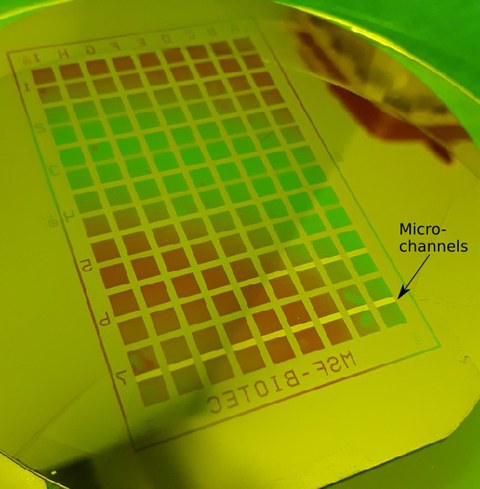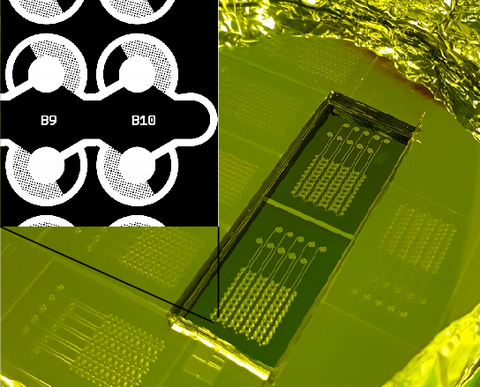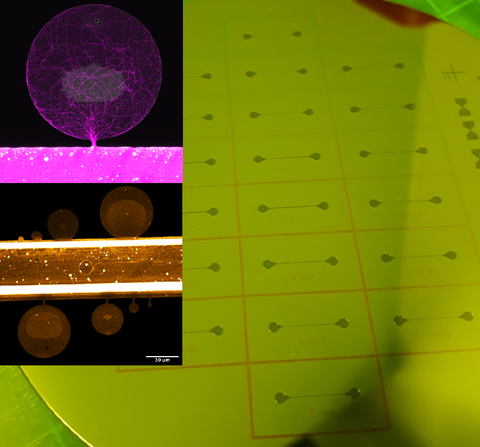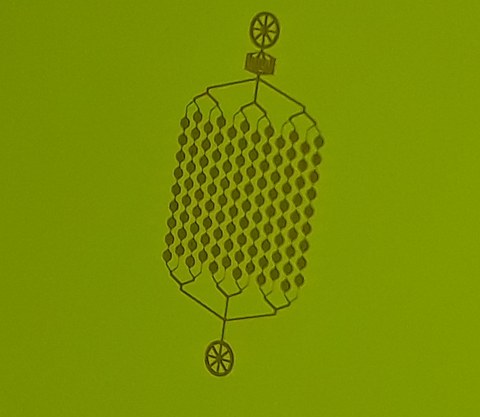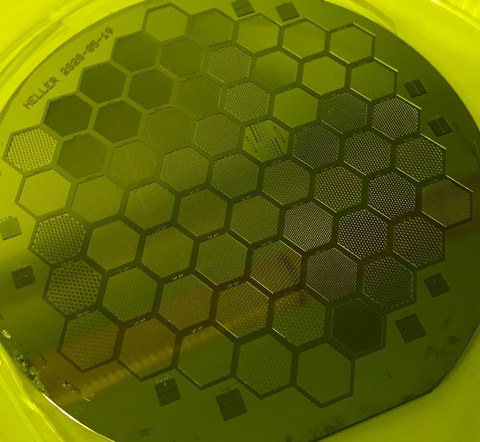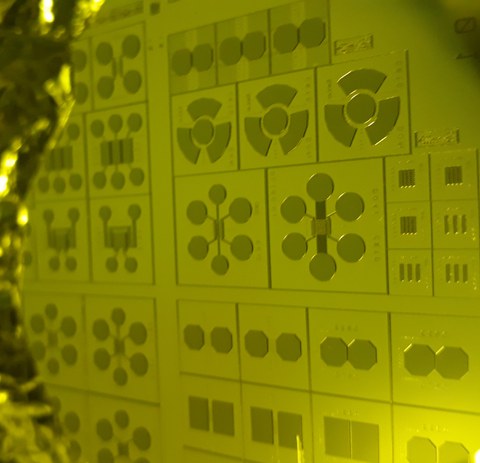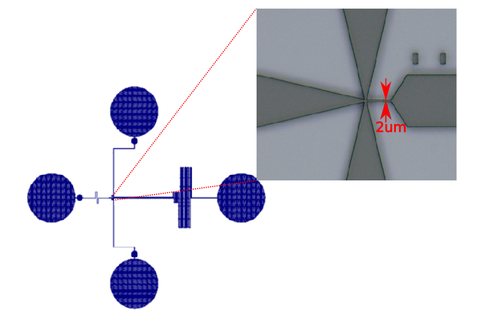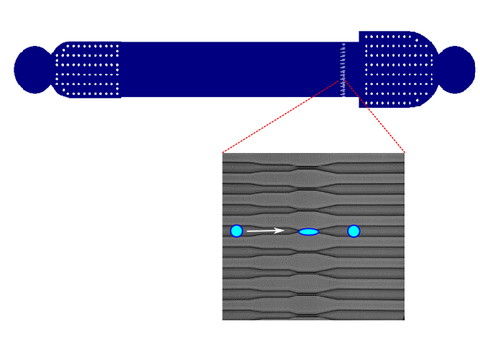Impressions
Axon growth micro-wells plate
This well-plate contains pairs of wells connected by array of microchannels through with axons can grow. The well spacing is as on standard 384-well-plate. The width of the microchannel is 5 μm, the spacing between them is 30 μm, the number of channels in one chamber is 100. More information you can find in the paper Bellmann et al.
Phase separation device
This microfluidic phase chip that enables the measurement of saturation concentrations
over at least three orders of magnitude for a broad spectrum of biomolecules and
solution conditions [Bremer et al.]
Actin trapping chambers
This device contains circular chambers from 5 to 50 μm connected with tiny channels of 1 and 2 μm in width to a big channel used to fill the chambers with solution. The device is described in the paper Hu et al. 2014
Liposome/particle traps in microchannels
This device is similar to the one described by Yandrapalli and Robinson. It contains a set of microchannels each of which contains traps for trapping and holding liposomes (GUV) or other particles of similar size (e.g. cells).
Hexagonal well arrays
This master contains micro-hexagons from 100 to 500 μm in size and separated by the distance from 25 to 500 μm. It was used to create hexagonal microwells for culturing organoids.
Axon growth chambers
This master mold contains chambers of different shape and size for studying axons/neurites growth.
Microfluidic Mixer to study assembly of outer membrane proteins (OMPs)
The device is similar to one described in the paper from Wunderlich et al. At CMCB it was used to study kinetics of binding, unbinding and rebinding of chaperones to OMPs.
Microfluidics for intracellular delivery
The device contains 60 parallel channels with a narrow squeezing part of only 5um. It was used for transcription factor delivery for reprogramming cells. A similar device is published by Sharei et al. 2013

